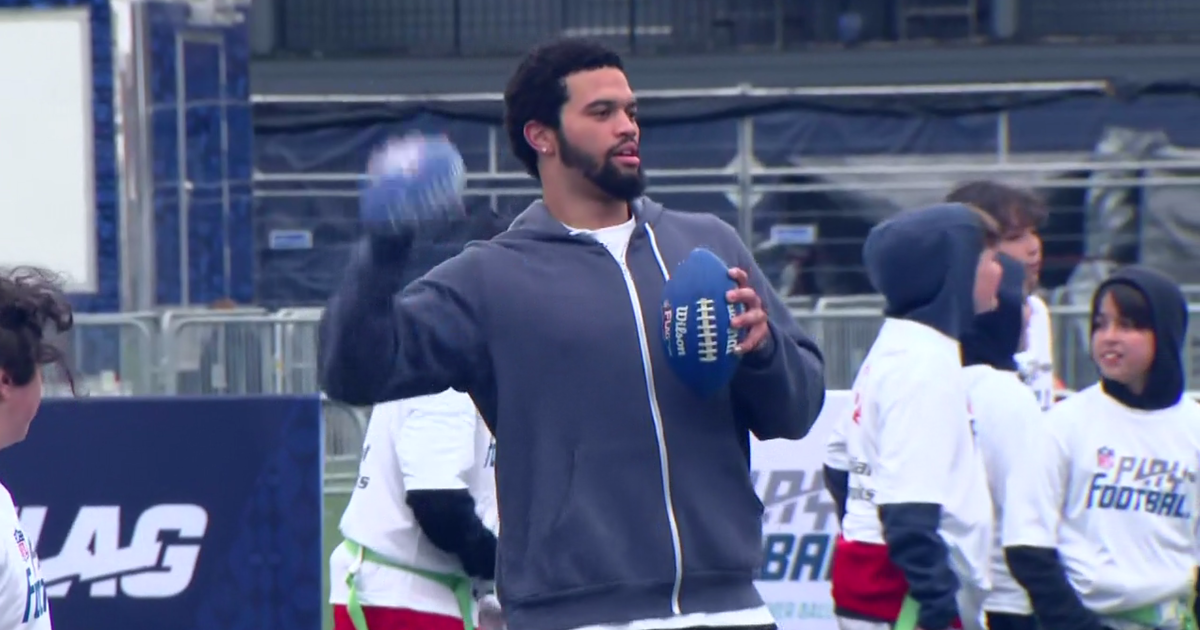Durkin: Rookie Spotlight - CB Kyle Fuller
By Dan Durkin-
(CBS) During the 2013 season postmortem this past January, Bears general manager Phil Emery was contrite about the personnel shortcomings on defense and resolute to remedy them. Emery maintained the Bears would be a younger defense filled with dynamic playmakers.
After spending just north of $35 million guaranteed on three new defensive ends and one strong safety in free agency, the Bears turned their focus to cornerback in the draft, selecting Virginia Tech's Kyle Fuller with the 14th overall pick.
Here's the breakdown on Fuller in our rookie spotlight.
Height: 6'
Weight: 190
Arm length: 32 7/8"
40-yard dash: 4.49
Vertical jump: 38.5"
Fuller's similarities with last year's first round draft pick -- Kyle Long -- extend beyond sharing the same first name. Like Long, Fuller comes from a football family, more specifically, a Virginia Tech football family. All Hokies, his oldest brother Vincent played seven seasons in the NFL, his older brother Corey is entering his second season with Detroit and his younger brother Kendall is entering his true sophomore season after earning freshman All-American honors.
Fuller was a four-year player (42 career starts) at Virginia Tech, earning the vaunted "boundary" corner role as a senior. Former Virginia Tech cornerbacks like DeAngelo Hall, Brandon Flowers and Jimmy Williams also played boundary corner.
To explain the significance of a boundary corner, in college football, the hash marks are 21 1/2 feet wider than the NFL (40 feet versus 18 1/2 feet), making them roughly three-and-a-half yards closer to the sidelines. This creates the concept of field (wide-side) and boundary (short-side). By playing the boundary corner, Fuller was typically in more man coverage, as teams are more inclined to run zone and provide safety help over the top to the wider or "field" side.
Given the opportunity to select any safety on the board, Emery chose Fuller above all. "We decided on Kyle Fuller the player," Emery later explained. Having had a chance to look at game tape from Fuller's past three seasons, here's my summary and take on his prospects for the 2014 season.
Positive impressions
Versatility -- Fuller displayed versatility both in coverage and alignment. He primarily played off-man coverage, but he also pressed and had zone responsibilities. Playing off-man requires a corner to squat and give a cushion, yet Fuller was still able to make quick breaks on the ball. In terms of alignment, Fuller was used as a boundary corner, field corner, slot corner and a whip (weak-side) linebacker in eight-man fronts. By lining up at a variety of positions, Fuller was forced to match up -- and excelled -- against shiftier slot receivers, flexed tight ends, as well as the opponent's top receiver on the perimeter.
Eye discipline -- Vision is an underrated aspect for cornerbacks. At the snap of the ball, they must simultaneously read the release of the receiver as well as spy the quarterback's drop-back, paying particular attention to the third step, as it dictates a quick throw (three-step) or a deeper drop (five or seven steps). Once that read is complete, they must refocus their eyes to the inside hip of the receiver and look for keys as the receiver transitions, typically by using choppy steps and hand brakes (slowing momentum with their hands). Fuller's pregame homework showed up on film as he showed keen route recognition. By reading the receiver's hips and resisting the temptation to peek into the backfield (and lose the receiver), Fuller was able to plant and drive to break up several passes.
Physicality -- Despite a slight frame -- Fuller put up only 12 bench press reps at the combine -- he was a force in run support. Fuller's willingness to play the whip linebacker role in eight-man fronts as well as an inverted safety (force run defender) and continually shoot the A and B gap against Georgia Tech's triple-option is a testament to his aggressiveness and desire to make an impact against both the run and pass.
Areas for improvement
Footwork -- Fuller's footwork can be sloppy at times. He has a tendency to let his feet get wider than his shoulders, which limits his ability to move out of that position. These lapses in technique left him susceptible to double moves, as it takes three steps to recover. Fuller also shows an inconsistent backpedal, sometimes hopping instead of kick-sliding or shuffling his feet. There were several examples of Fuller squatting and being flat-footed at the top of a route stem, which allowed the receiver to stack vertically on top of him. In the NFL, plays like that go for touchdowns. As a rookie, Fuller's primary objective must be to play with a proper base and do a better job of keeping his feet more narrow and underneath his shoulders.
Tackling -- Yes, Fuller is a willing hitter and a physical player, but his tackling form needs improvement. Fuller typically shoots low at his opponent, which is a good approach. However, he has a tendency to drop his head and doesn't see what he is hitting. This led to both injuries -- Fuller suffered a shoulder injury in 2012 -- and missed tackles in the open field. Fuller needs harness his aggressiveness, break down (chop his feet) as he approaches and keep his head up as he drives through his target. In a division featuring Adrian Peterson, Eddie Lacy and Reggie Bush, it is imperative that players in the secondary secure the tackle, as it's a likely touchdown if they don't.
Durability -- Not only did Fuller suffer a shoulder injury in 2012, he also dealt with a groin injury and just this past season, he missed six games after undergoing sports hernia surgery in November. Fuller actually pulled out of the Senior Bowl, as a precaution, as he was still rehabbing from surgery. Given the Bears' history with drafting pre-injured players, Fuller must prove he can remain healthy over the course of a physically demanding NFL schedule.
Prospects for 2014
Prior to drafting Fuller, the Bears' top three corners were all 30 years or older. The NFL has become a three-receiver league, so the third cornerback is a de facto starter, especially in the NFC North. In 2013, the Packers and Lions ran 11 personnel -- one running back, one tight end and three receivers -- 68 and 67 percent (respectively) of their offensive snaps, according to ProFootballFocus.
With Charles Tillman and Tim Jennings entrenched as starters, it's safe to assume Fuller will be given every opportunity to win the third cornerback job over Kelvin Hayden.
During offseason practices, the Bears have kicked Jennings inside to slot corner and let Fuller play outside. This is likely to ease his transition into the league, as a slot corner must quickly diagnose plays and read and react without sacrificing speed. Fuller's ability to mix and match against different types of receivers should be a boon in 2014, and he has the physical and mental makeup to be an eventual No. 1 corner.
Follow Dan on Twitter: @djdurkin



